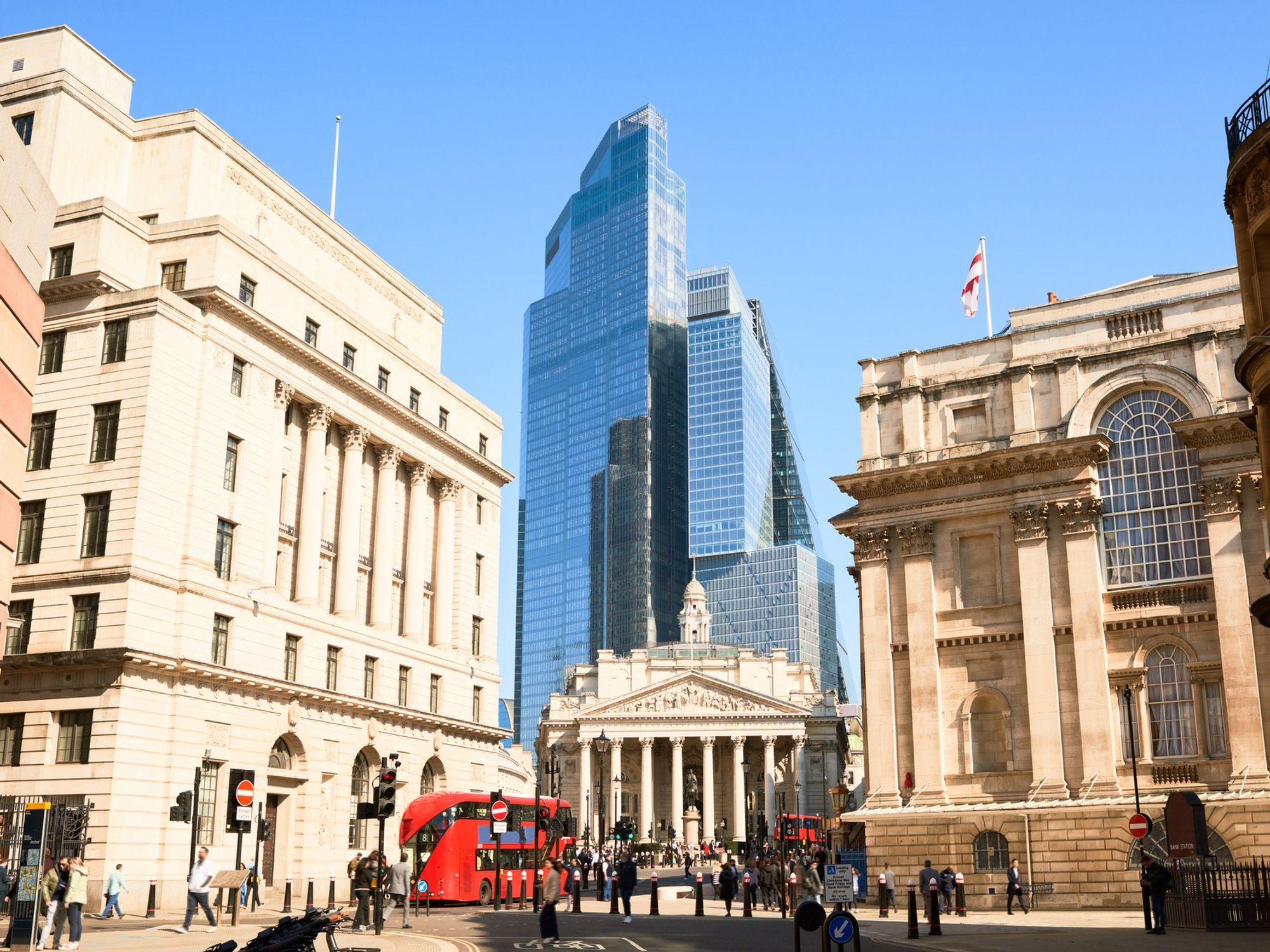Trafalgar Square 'goes woke' as fourth plinth taken over by artwork aiming to 'unite trans community around the world'
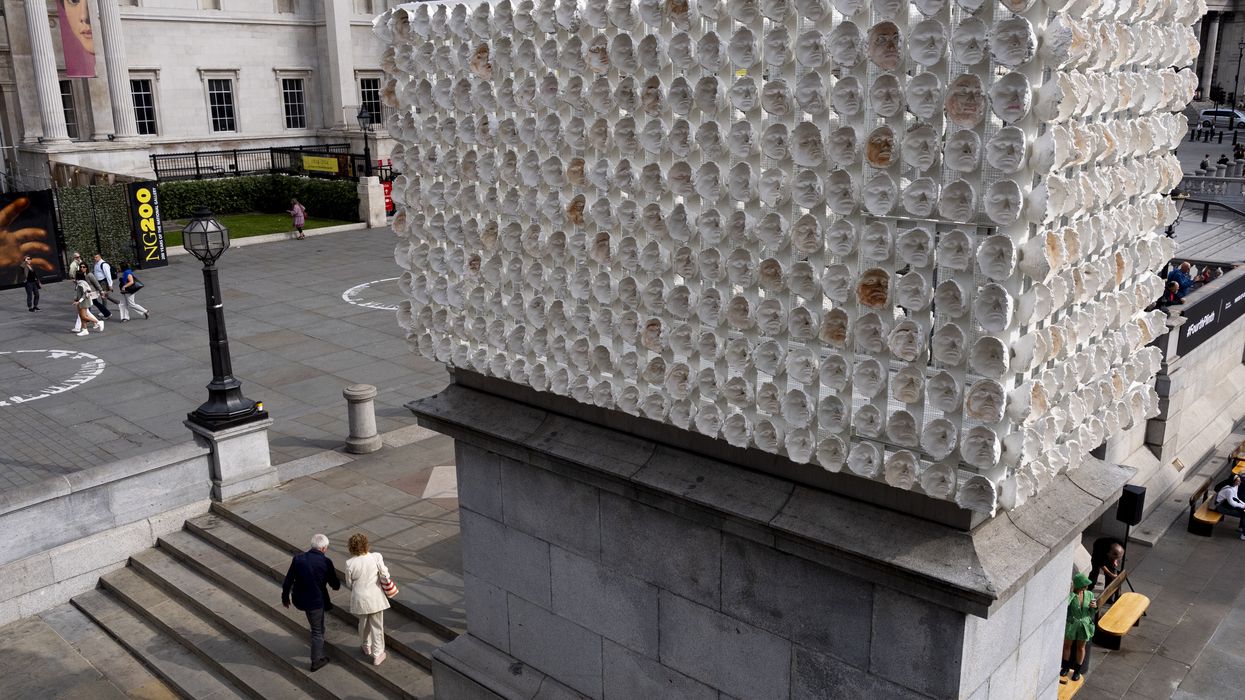
People walk past Mil Veces un Instante (A Thousand Times in an Instant) by Teresa Margolles | PA

Some politicians have called for the space to be occupied by a statue of Queen Elizabeth instead
Don't Miss
Most Read
Latest
Trafalgar Square has unveiled the new artwork for its fourth plinth, depicting the faces of transgender and non-binary people.
The artwork, entitled "Mil Veces un Instante" (A Thousand Times in an Instant) consists of a towering cuboid made of more than 300 masks, a piece designed to "unite the trans community around the world."
The Mexican artist Teresa Margolles was behind the artwork and was accompanied by members of her country’s trans community.
Each individual mask that makes up the piece has a name and features traces of the person on whom it was based, with lipstick smears and false eyelashes visible on the work.
The artwork is the 15th to stand on the plinth in the London square and was originally pitched as a tribute to Karla La Borrada, a 67-year-old trans singer and former sex worker who was murdered in Ciudad Juárez nine years ago.
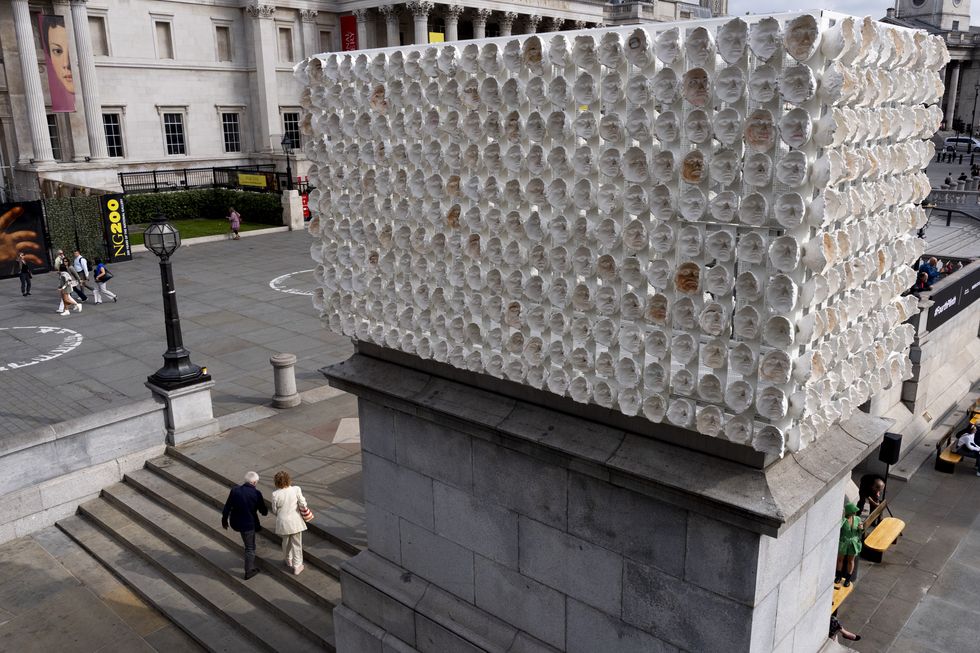
People walk past Mil Veces un Instante (A Thousand Times in an Instant) by Teresa Margolles
|PA
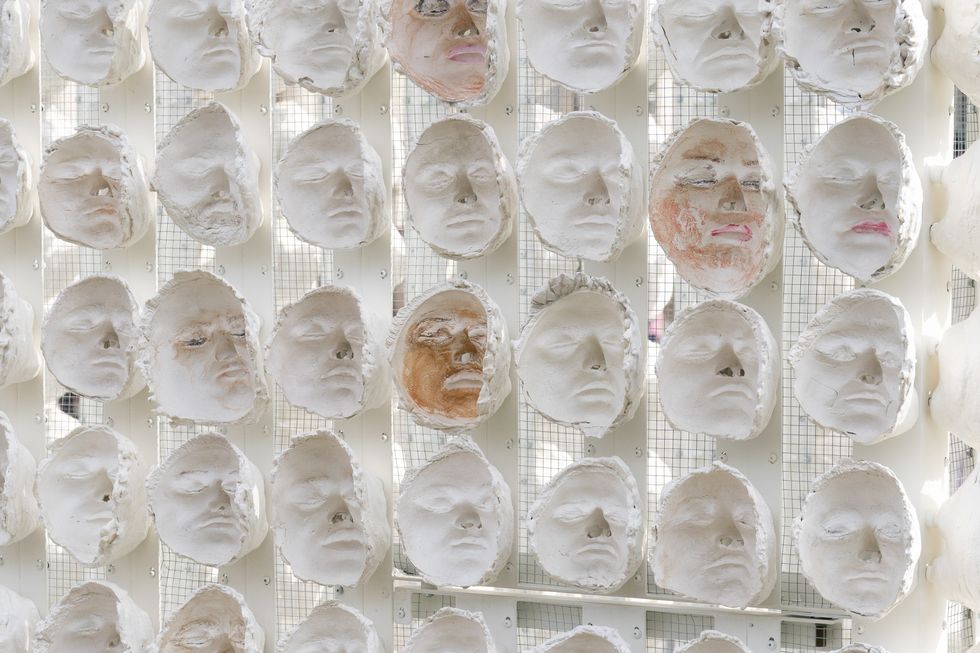
Some of the masks featured in the artwork
|PA
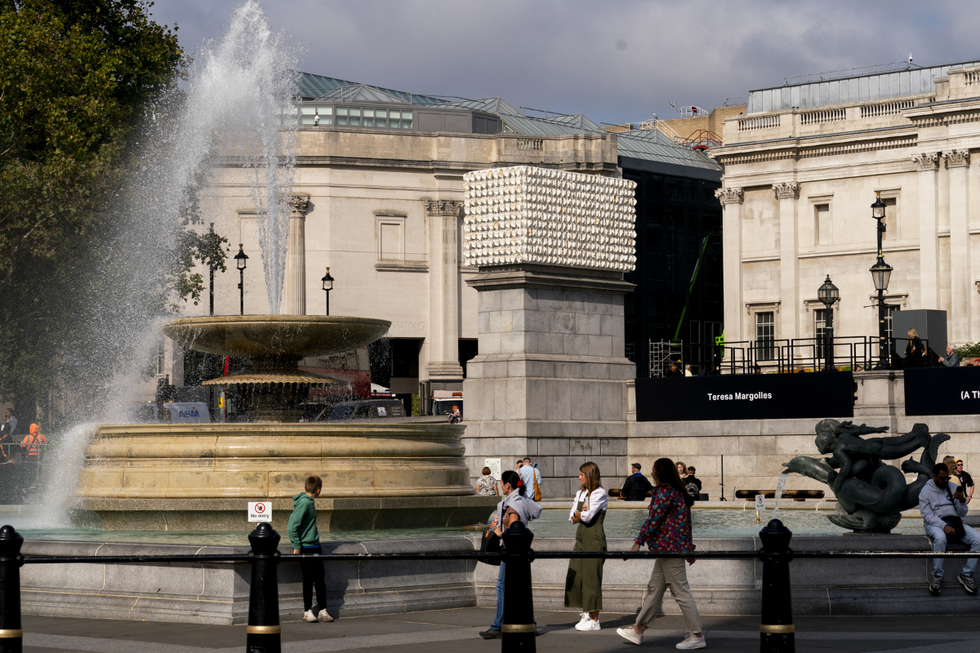
The artwork on the fourth plinth
|PA
Margolles said: "We pay this tribute to her [Borrada] and all the other people who were killed for reasons of hate. But, above all, to those who live on, to the new generations who will defend the power to freely choose to live with dignity."
Chair of the fourth plinth commissioning group Ekow Eshun said the piece could help "unite the trans community around the world" adding that it was one of the most "nuanced" and "timely" artworks to sit in the space since the project started in 1999.
It comes as official figures showed in the year ending March 2023, 4,732 hate crimes against transgender people were recorded, a rise of 11 per cent on the previous year.
Deputy mayor for culture and the creative industries Justine Simons said the UK’s public statues did not mirror the diversity of the country or the capital city.
She said: "Today we are changing that story. This collective portrait of the trans community is a celebration and an act of solidarity with those who do not enjoy the same freedoms as we enjoy in the UK."
LATEST DEVELOPMENTS
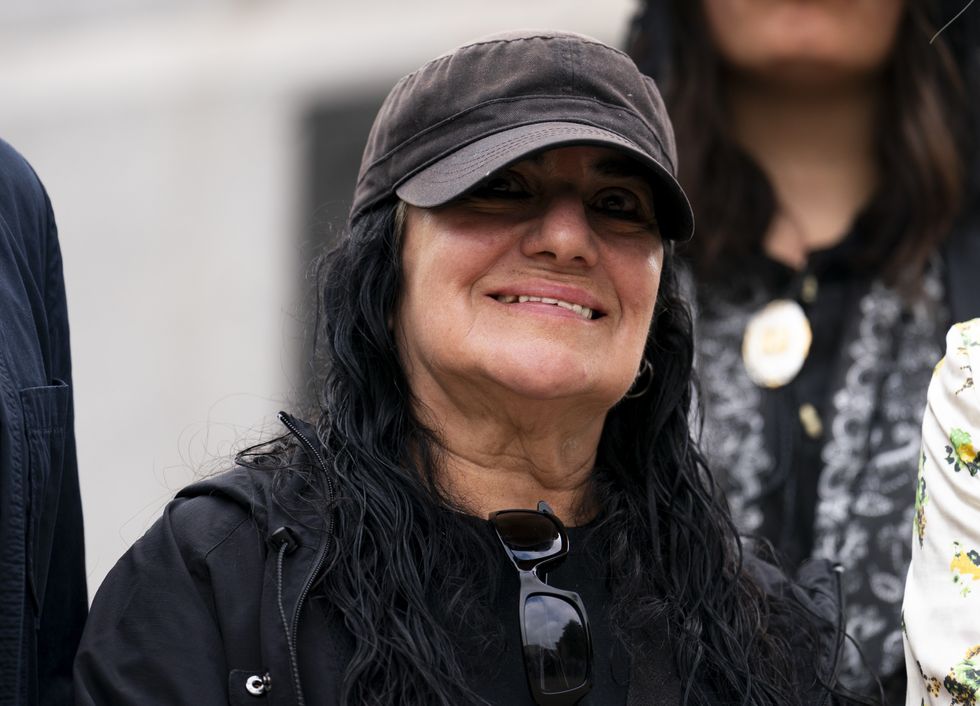
Artist Teresa Margolles was behind the work
|PA
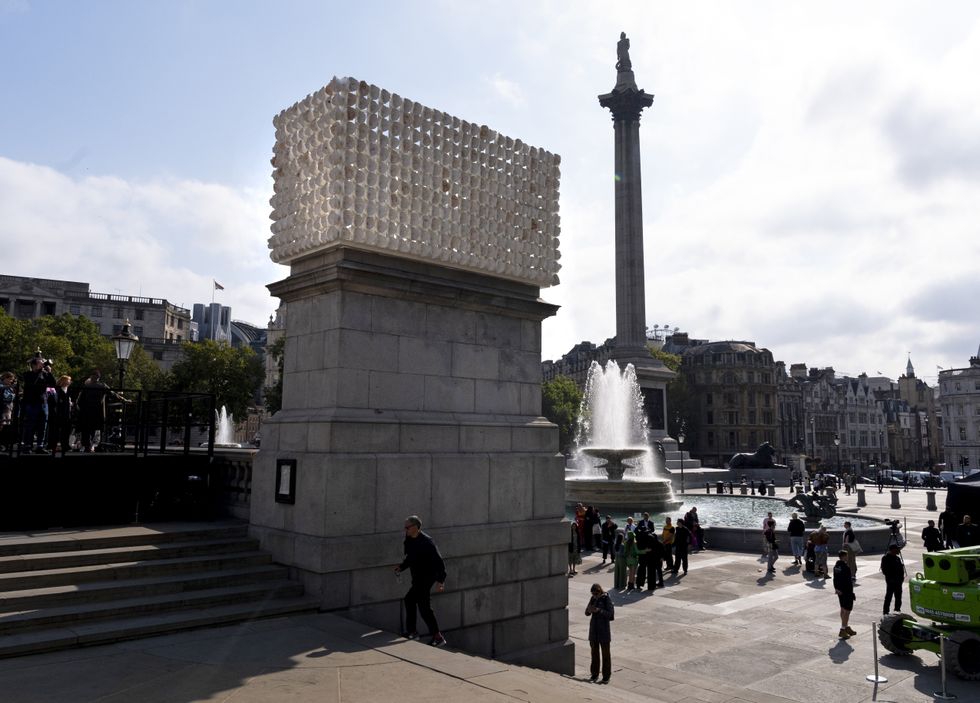
The artwork on the fourth plinth
|PA
Margolles won the commission for the fourth plinth in 2021, alongside a sculpture by Samson Kambalu, which stood in the square last year and was a comment on the legacy of colonialism in Africa.
The tradition has come under scrutiny with some politicians calling for the space to be occupied by a statue of Queen Elizabeth II instead.
However, the commission has divided opinion after an investigation by the Guardian revealed only one of the winning commissions was on display in the UK, while three-quarters of the former fourth plinth works were locked away in storage.
Former plinth artist Rachel Whiteread said: "I think it has run out. There have been some really great projects and then there have been some that are not so great.”
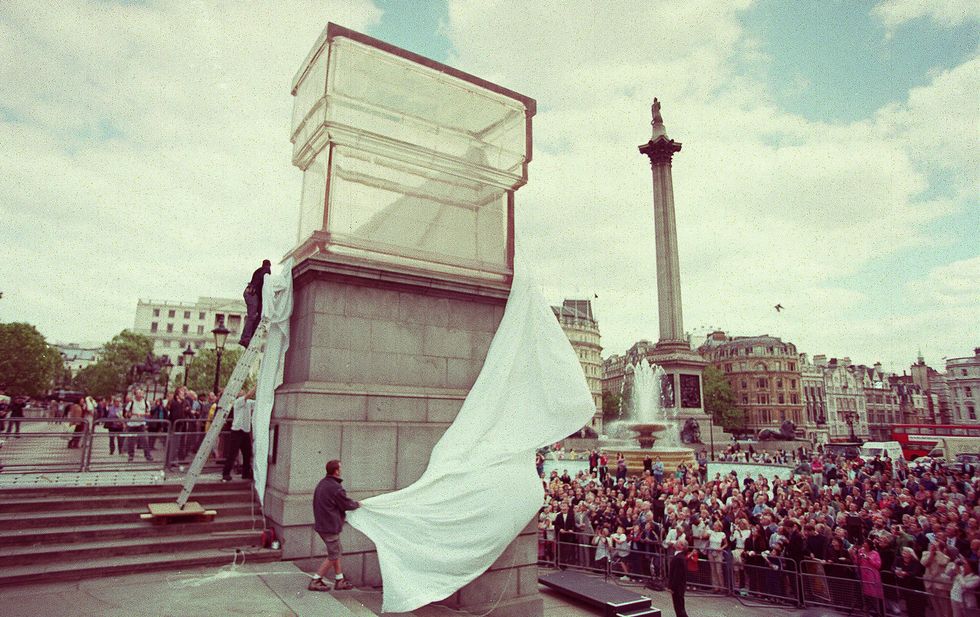
Rachel Whiteread's Monument being unveiled in 2001
|PA
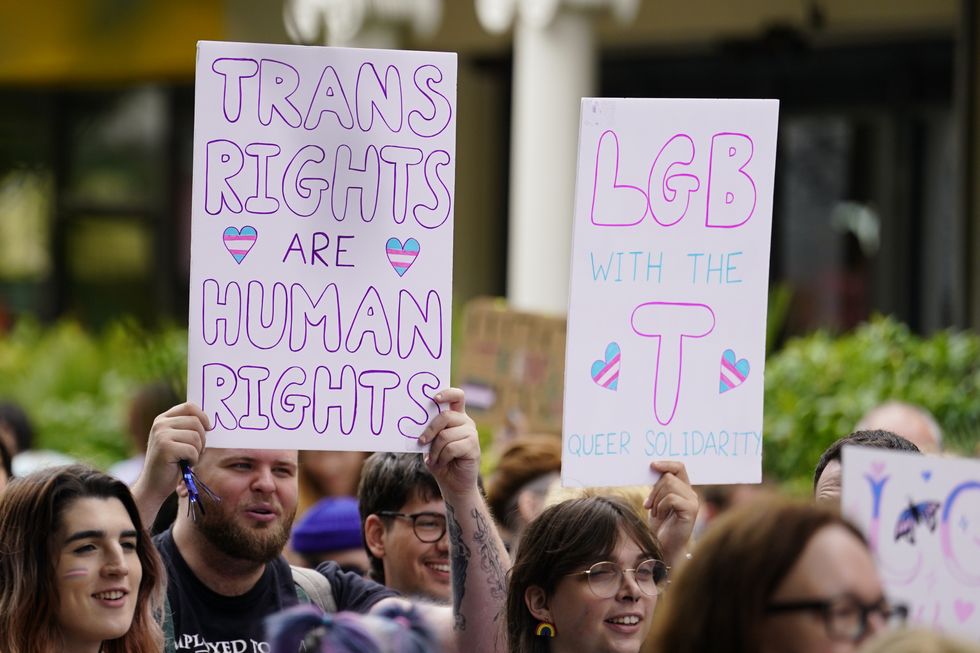
People take part in a Trans Pride protest march in Brighton
|PA
Today's unveiling comes after official figures estimating the number of transgender people in England and Wales have been voided following an investigation found that people may have misunderstood the question on gender identity in the 2021 census.
The Office for National Statistics (ONS) figures previously suggested that more than 260,000 people in the UK identify as trans, roughly 0.55 per cent of the population. The census also showed that around 1.5 million people (3.2 per cent) identified as gay, lesbian, bisexual or another sexual orientation.
Deputy director at the ONS Mary Gregory said some people may have misunderstood the question that asked: "Is the gender you identify with the same as your sex registered at birth?"
Writing on the ONS's website, she said there was "potential bias" in how the question was answered "by those who responded that they had lower levels of English proficiency, some of whom may have mistakenly given an answer suggesting they were trans."
The number of people who answered the question mistakenly is thought to be "relatively small", she added, but enough to paint an inaccurate picture in areas "where there are higher levels of non-English speakers."









